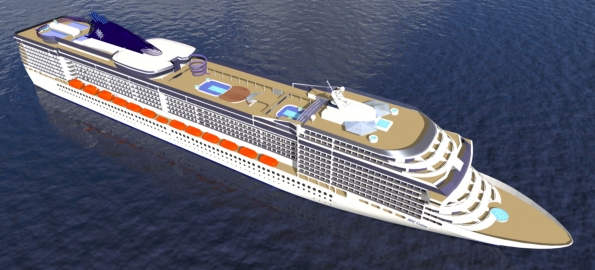 Industry focuses on the concept of Equal Safety, New Stability Rules, Fire Prevention, Weather Conditions, Accident and Evacuation Scenarios, and the bottom line: the Human Factor.
Industry focuses on the concept of Equal Safety, New Stability Rules, Fire Prevention, Weather Conditions, Accident and Evacuation Scenarios, and the bottom line: the Human Factor.
New rules are providing greater freedom for innovative thinking, according to Robert Wright, principal surveyor of statutory passenger ships at Lloyd’s Register of Shipping (LR). He said that the new rules will not only encourage designers to come up with more exotic concepts, but will lead to greater safety as well.
Moving from a reactive to a proactive approach, SOLAS is providing fire safety objectives allowing alternative designs and arrangements as long as objectives and purposes are met, said John Hicks, naval architect and head of LR’s passenger ship support center in Florida. He noted the two-deck suites on the Queen Mary 2, which are compliant with the rules, containing a fire within the deck of origin as well as providing escape routes.
SOLAS’ “alternative design and arrangements” is currently the best possibility offered to ship designers to use alternative performance-driven fire safety designs and arrangements instead of the traditional prescriptive design, according to Alessandro Maccari, ship safety design manager at Fincantieri.
The analysis of performance criteria – cost and safety – using simulation tools and techniques – may be a step toward more innovative design, provided the authorities can evaluate and approve such designs on the basis of clear and equal criteria, according to Maccari, who noted the difficulty of determining and comparing safety and performance levels. But, in principle, he said, by incorporating safety as a design objective, it should be possible to develop innovative designs that achieve the same safety level at lower cost or increasing the safety level at the same cost.
According to Jean-Jacques Juenet, product manager for passenger and ro-ro ships at Bureau Veritas, cruise-ship designers have used up almost all the possibilities within the framework of the existing rules so the owners are driving the changes. “Now, if the owners want to design something new, they have new possibilities within the rules,” he said.
Equal Safety
New limits are set by the equal safety principle, added Kai Levander, senior vice president of naval architecture at Aker Finnyards. That means, in terms of fire safety, that ships can have larger spaces if they also provide more escape routes, he said.
The new rules set safety goals, but do not necessarily prescribe how the designer should reach the required level of safety, Levander explained. “But if you go beyond the traditional 1,600-square-meter fire zone, you must show equal safety,” he added.
Damage stability is also moving to a probabilistic approach and, according to Levander, calculations have shown that bigger ships will fulfill the probabilistic rules easier than smaller ones. Hence, in the future, bigger ships may be safer than smaller ones.
“A performance-based design approach is important,” Fincantieri’s Maccari said. “The guiding philosophy is not to have a zero-risk design, but have reasonable confidence that the design will perform its intended function when necessary and in a manner equivalent to or better than a design derived from prescriptive SOLAS requirements only.
Prescriptive regulations evolved parallel with different design aspects, explained Maccari, and there has been no real integration, considering the combined effects of the different systems and arrangements and their overall performance in case of an incident. The real performance in terms of safety is not normally known, Maccari said.
Basically, according to Karl Morten Wiklund, manager of ship classification product, maritime technology and the production center at Det Norske Veritas (DNV), safety boils down to the following: that a ship must the capable of floating, which means a waterproof hull; it must have intact and damage stability; it must be structurally strong enough for its intended service; it must have reliable propulsion, including redundant systems for power, electrical supply and power management; and it must be able to steer and navigate. In addition, a ship must meet certain standards for fire safety, evacuation, environmental protection, passenger and crew comforts, security and safe operations.
Compliance with rules and standards are calculated and documented. “Simulation tools are now so good that we can work backwards,” said Wiklund. “We will know exactly how a ship will react in a given situation and have model tests that produce exactly the same results.” – Oivind Mathisen
Excerpt from the Cruise Industry News Quarterly Magazine: Winter 2005-2006




